Garrahan Upsets Field with Quicksilver National Motorcycle Enduro Race Win
Revised format breathes new life into old style dirtbike race series
But in the ‘90s, the popularity of enduros began to wane. Sure, computers removed much of the complexity of keeping time, yet that was one more piece of expensive gear you needed. And with the explosive growth in motocross spilling over to flat-out cross-country races like the GNCCs, enduro fields shrank to the point that 200-300 constituted a respectable number at Nationals.
So, for 2007, a group of enduro die-hards approached the AMA with a radical notion: Let’s get rid of the time-keeping aspect and blend the flat-out racing of, say, hare scrambles with the single-track emphasis of enduros.
After considerable debate, the AMA agreed that something needed to be done and permitted the newly formed National Enduro Promoters Group to come up with a new set of rules. Among them: All checkpoints would be known; complicated time-keeping was no longer necessary; the courses would be entirely off the highway and shorter though still providing a full day’s riding so they no longer needed license plates and riders didn’t need driver’s licenses. Basically, all you needed was a dirt bike with a spark arrestor. A stock motocross tank should even work for most guys—and girls.
So, the eight-round 2007 AMA/FMF Racing National Enduro began, and judging simply by the number of entrants at rounds one and two, it appears that the changes successfully breathed new life into what is the oldest form of off-road competition that the AMA sanctions. More than 350 riders showed up at round one in Texas, with defending series champion Russell Bobbitt edging seven-time series champ Mike Lafferty for the win.
At round two in Central California, the 35th annual Quicksilver National hosted by the Salinas Ramblers Motorcycle Club easily reached the 400-rider limit imposed by the BLM. Old-time Ramblers thought it the largest number of entries since the ‘70s or ‘80s when it drew 600 or more.
Apparently, the rules a-changin’ piqued the interest of many old-time enthusiasts and drew new blood as well.
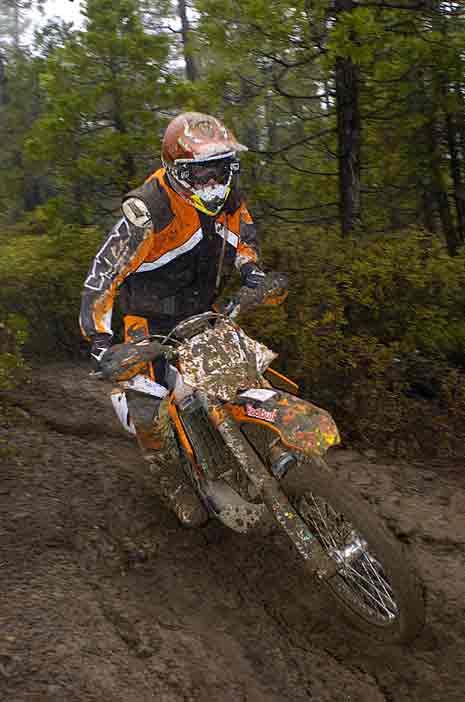 |
Round one winner Russell Bobbitt ended up a close second at the Quicksilver, though he retains the series points lead with six rounds remaining. |
“I didn’t want to go out and buy the computer,” Team Honda desert racer Kendall Norman admitted after finishing 19th overall on his Precision Concepts/Dunlop/Monster Energy CRF250X. “It’s one of those things where you know you’d have to do a few of them to get the feel of them. I was a little skeptical of what the format was going to be [like] because they weren’t calling it a Qualifier, but it wasn’t an [old school, time-keeping-required] enduro.
“But once we got out there it was good; I really liked it. I really liked just cruising [in the transport sections] and then being able to just wick it up for [the test sections]. But it was fun; I really liked it. I’d do it again.”
Red Bull KTM’s Bobbitt said, “I liked this enduro this year better than last year not only because of the new format, but the terrain wasn’t as snowy (though it was still very sloppy after overnight rains that continued with sprinkles throughout much of the day).
“But the new format made it easier to just race and not have to worry so much. Last year I was just time-keeping and trying to get your goggles and all that and your gloves [from getting wasted]—it really made it a lot nicer [this year]. It gives you more time and really lets you put all you’ve got [into the test sections].”
Indeed, instead of just turns, speed changes and resets, the route sheet showed where each test would start while the actual locations featured flags with “ST” on them. (Naturally, not everyone was aware of the new rules, but most caught on quickly.)
However, Brian Garrahan, a local who’s always a threat to win any woods race in Northern and Central Cal, pointed out one problem that seemed to pop up more than normal: “What it did mostly to affect us is it let people catch back up on the reset. So the people that dropped back that you passed, they get back in front of you again [after the reset] and you have to pass them again. It caused more bottlenecks where before they were dropping time all the time; you’d go through and you’d never see them again.
 |
Last year's winner, Patrick Garrahan, probably chose way too much bike in his KTM 525 XC, but he made the most of it and earned a close fourth, a point behind Lafferty. |
“But this time you’d see them again because you have a reset, a 20-minute reset, and they’d have time to catch back up and get back in front of you again so you’d have to pass them all over again in the bottlenecks and stuff like that or the slower sections or wherever. So that was the only real issue I saw with the new format, but it’s a better format anyway.”
Despite being off bikes for most of last year as he recovered from a broken leg suffered at the beginning of the season, Garrahan demonstrated continued improvement, netting an upset Quicksilver victory on his Valli Construction/Maxxis/Moose-backed YZ250. It was his first National enduro triumph, though he has an estimated eight National hare scrambles wins.
Both of the Red Bull KTM teammates chased him to the finish. Lafferty, the early leader on his Michelin/FMF/Arai 450 XC, foundered in a bottleneck right off the bat on the second loop. The last section saw him almost tip-toe through in comparison to Bobbitt, the leader of that portion on his Michelin/FMF/TLD 250 XC, and Garrahan. Thus, Garrahan ended up with a winning score of 51 to edge Bobbitt’s 52. Lafferty came in third at 57 while Garrahan’s brother Patrick, the 2006 Quicksilver winner riding Maxxis/Hlebo Suspension/FMF 525 XC this year, earned fourth with his 58. Carhartt KTM’s Stephen Edmondson completed the top five with a 63 on his Ford/Maxxis/Motul 250 XC.
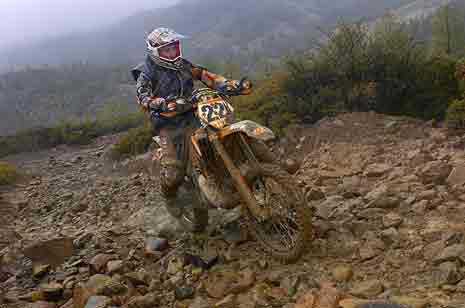 |
Stephen Edmondson started out a bit slow in the early fast stuff but got progressively better as the race got tighter and nastier, finishing fourth. |
Rounding out the top 10 were AMA District 36 ace Brian Sperle (the first A rider), Ricard Wressel from Sweden (who’ll contest the entire series), Eric Mashbir (the top Senior A), newcomer Kyle Redmond and Brian Butler (another D-36 star).
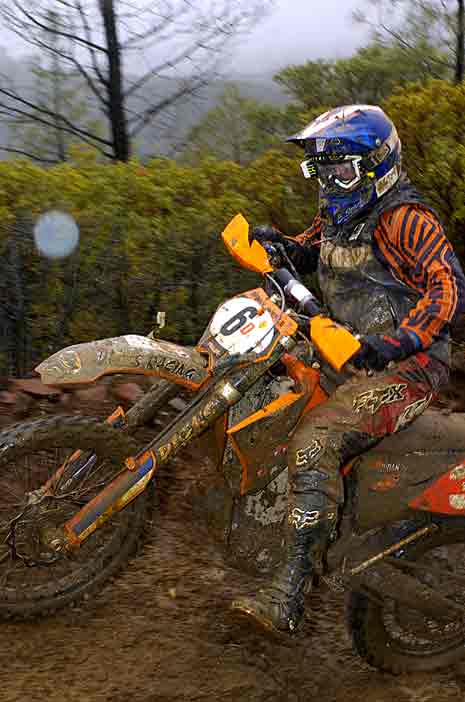 |
Brian Sperle, a regular at the top of D-36 woods races, shined at the Quicksilver and finished sixth overall, the best of the A riders. |
The series will now head to the East Coast with round three taking place in New Jersey at the beginning of next month.


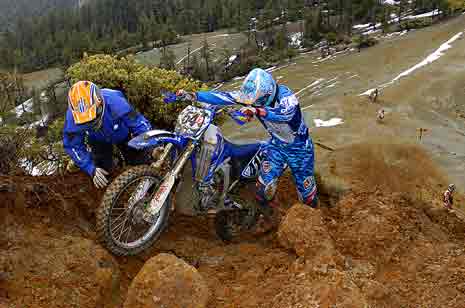
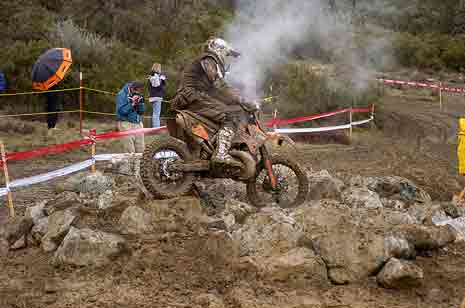

 Your Privacy Choices
Your Privacy Choices